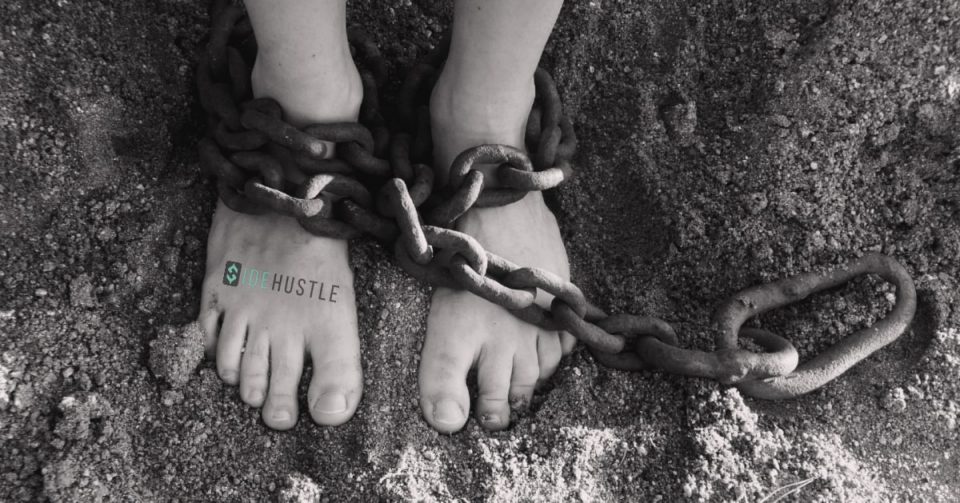There’s nothing quite like being in your 20s, especially when it comes to avoiding money traps. Maybe you’re getting ready to finish college, you’ve just moved to a new city to start a career, or you saved some money and took time to travel. It’s an exciting time, but it can also be pretty stressful. You’ve got to keep up with your peers and decide what you’re going to do for the next forty years of your life.
Managing your money during this time takes skill. You have the opportunity to lay a great foundation for the rest of your life, or plant financial seeds of poison that can come up and choke you out later.
Plenty of sources are telling you what you should do, so in this article, we’ll talk about 7 money traps to avoid while you’re in your 20s (and at any time, really).
1: Spending to Impress
Now, this money trap is different from “dress to impress.” When you’re looking for a job or promotion, you should try to look the part as much as possible. However, that does not apply when you’re trying to impress friends or significant others.
You might not even realize that you’re trying to impress someone, and you also don’t have to be trying to impress anyone in particular. Just scrolling through Facebook or Instagram will give you plenty of standards to go for.
Maybe your car is too old. Or maybe you aren’t using the latest $100 face cream. Advertisers and influencers are always trying to, well, influence the rest of us. They want to make a profit, and to do that they need to sell products. In reality, your face is probably fine with the $20 cream from you got from Walmart.
Perhaps you just met someone new and you want to take them to a fancy restaurant every time you go out. Unless your wallet is full of Benjamins, that’s a recipe for disaster (and breakup).
2: Not Saving Money Regularly
This money trap can be hard to avoid. If you don’t have a whole lot of extra money, how are you supposed to save? Well, even if you only have $10 per month extra, saving that is better than spending it. The important thing is to get into the habit of saving now. If you’re not used to setting money aside, you’ll always find something to spend it on, even if you double or triple your income in the future.
Once you have some of your own money saved up, you can start putting some savings in low-risk investment funds. That way, your money can grow between 5% and 10% per year. You won’t get anywhere near that return with a standard savings account.
3: Buying New Cars Instead of Used
This money trap should really be a no-brainer, but it’s hard to resist in real life. Car dealers have a way of making the numbers seem friendly, like it’s so easy to get into a new car whenever you want. But if you pay attention, you’ll see that a $15,000 price tag turns into $17,000 when you finance it.
You can save so much money if you purchase used cars that are in good condition. It’s even better if you’re able to save cash and pay for it that way. Financing a used car will still add some cost to the final repayment amount. Salesmen are often compensated for inking a financing deal with a customer, so don’t let them talk you into it if you can use your savings.
7 Money Traps to Avoid in Your 20s: 1 - Spending to Impress, 2 - Not Saving Money Regularly, 3 - Buying New vs. Used, 4 - Credit Card Debt, 5 - The Wrong Deals, 6 - Not Having an Emergency Fund, 7 - Credit Score Knowledge… Share on X4: Credit Card Debt
By far the MOST impactful money trap of them all. It’s so easy to get into debt as a young person. If all you have are student loans, credit card companies can jump on the opportunity to issue you credit. It’s not uncommon for someone in their 20s to get a credit card offer with a limit of $5000 or more.
If you know how to manage your credit, you might be able to handle that. However, many young people don’t know the ins-and-outs of credit, credit scores, and what goes on your credit report. Making one mistake can lead to a slippery slope of bad credit.
Credit cards companies also tend to offer introductory specials, like 12 months of no interest. That sounds great, but if you don’t pay off your purchase within one year, you’ll get charged interest for the whole year when that time is up. You’ll have a minimum payment, but that won’t pay off your debt. It will keep you in a cycle of interest instead.
If you do get a credit card in your 20s, stick to these rules to maintain a good credit score:
- Only use 30% or less of your credit limit (total across cards and per card)
- Make more than the minimum payment
- Try to pay off the balance each month
- Always make payments on time—late payments hurt your score
5: “No Money Down” and “No Credit Needed” Deals
You may have experienced this money trap before. Picture this as you walk into a store and zero in on an item you want. You notice it’s too expensive, so you go to leave. A salesman then stops you and tells you about a great offer that will let you walk out of the store with the new item. And the best part? You don’t have to pay anything today.
A “No Money Down” deal is often based on your credit score. If you have a good score, a bank will finance your purchase like a miniature personal loan. You’ll have to make payments to cover the cost of the item plus interest, so a $500 item might cost $650 in the end. Be careful with these. If you miss a payment you may be required to pay extra fees.
A “No Credit Needed” deal is a little more sinister. These deals target people with no credit (young people) and people with bad credit. You may be required to submit bi-weekly automatic payments from your bank. The payment amount won’t be too bad, usually. However, what you end up paying in the end may be double the price of the item.
That’s not a joke. You pick out a $1000 refrigerator. You do the “No Credit Needed” deal. Two years later, you’ve paid $2000 for that fridge (which is now worth $500 anyway). The bank sees you, a person with no or poor credit, as a huge risk, which is why they charge such a high premium.
6: Not Having an Emergency Fund
Not having an emergency fund is one of the most common money traps for people in their 20s. It doesn’t need to be a large fund, but having $1000 set aside for emergencies will save you from suddenly being late on rent or having to take out a payday loan.
Financial emergencies happen. Your car could break down. You could injure your back on a hike. Any number of things can happen that would put financial stress on your bank account. If your account is already low, you might be tempted to get a high-interest personal loan or a payday loan to cover your unexpected expenses. These loans come with huge risks and often dig people further into debt. An emergency fund can help you avoid those risks.
7: Not Understanding Your Credit Score
Lastly, let’s take a minute to talk about your credit score. Many young people—and people of any age—have no idea how their credit score is calculated. Not understanding your personal credit score is a sinister money trap before it’s a trap of ignorance. If you don’t know how it’s calculated, you won’t be able to raise or improve your score as efficiently.
There are two main scores to think about: FICO and VantageScore. Lenders and banks look at your FICO score, while employers and landlords tend to look at your VantageScore.
FICO looks at five categories. Here they are along with their respective weights in the score:
- Payment history: 35%
- Amounts owed: 30%
- Length of credit history: 15%
- New credit: 10%
- Credit mix: 10%
VantageScore looks at six:
- Payment history: extremely influential
- Age and type of credit: highly influential
- Percentage of credit limit used: highly influential
- Total balances and debt: moderately influential
- Recent credit behavior and inquiries: less influential
- Available credit: less influential
You can see that payment history is the most important thing for both scores. The two scoring models differ after that, but they both take into account similar things.
For example, they both care about your credit utilization—Vantage calls it “percentage of credit used” and FICO includes it in the “amounts owed” category. If you have a $1000 limit and you are using $500 of that, your credit utilization is 50%. That’s actually a bad number. It should be at 30% or below for a good score.
This category also tracks utilization by card. So let’s say you had two cards with $1000 limits. On one card, you’ve used $200, while you’ve used $600 on the other. You’d have two utilization ratios: 20% and 60%.
One more thing about credit utilization:
if you have a credit card with no balance, keep it open. Closing a credit card will lower your overall credit limit and raise your utilization ratio. Try to keep credit inquiries few and far between, and have a good mix of credit like an auto loan, credit card, and personal loan.

Making the right financial choices in your 20s is crucial. Avoiding these money traps at this point in life can set you up for a better financial future. Looking for more side hustle ideas? Be sure to check out our Master List of 92 Side Hustle Ideas to get your hustle juices flowing.

